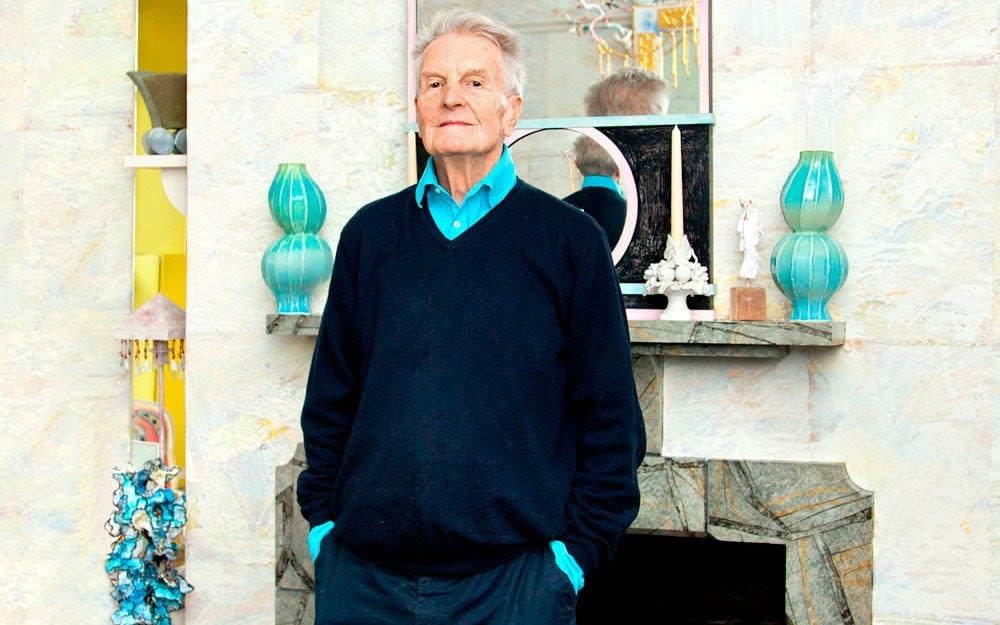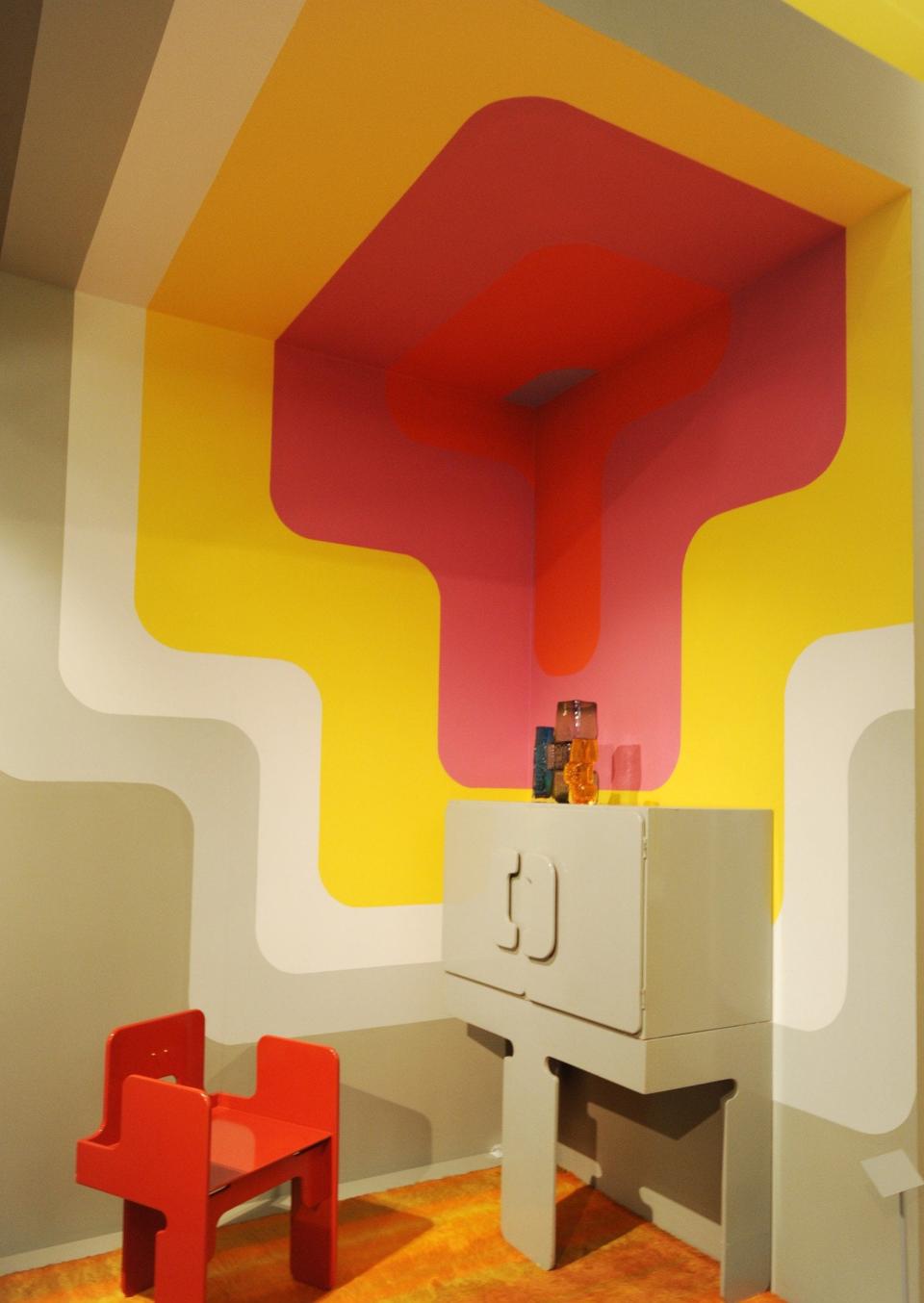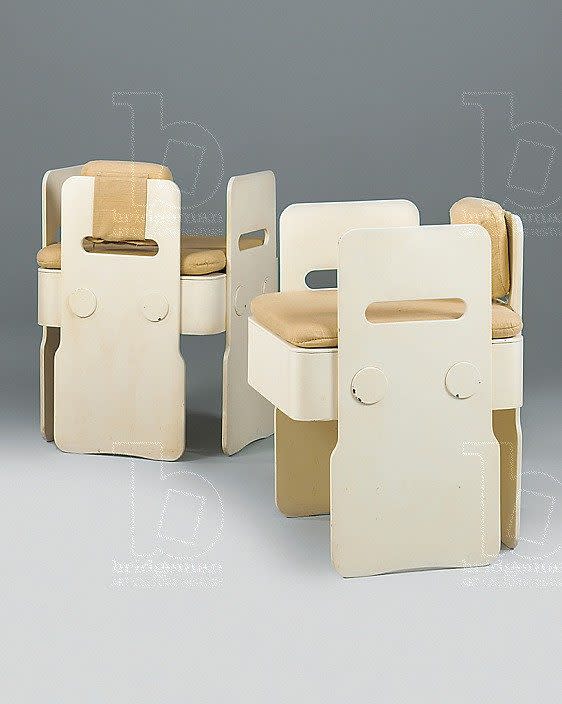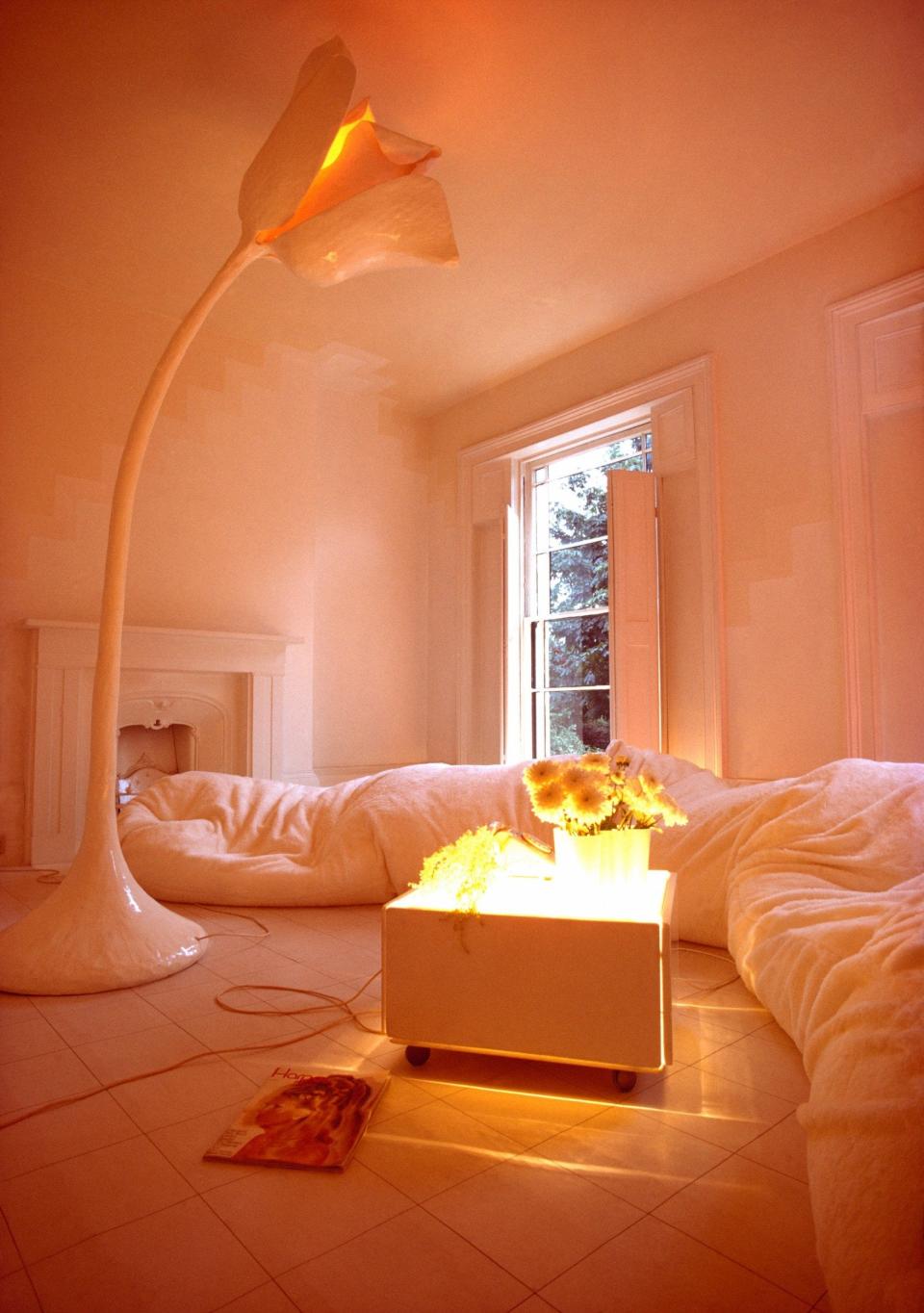Max Clendinning, designer who ‘did for furniture what Mary Quant did for fashion’ – obituary

Max Clendinning, who has died aged 95, was an architect and interior designer who created minimalist mid-century furniture for Liberty and Christian Dior and was celebrated for his 1965 slot-together Maxima chairs.
Clendinning’s commissions ranged from London’s haute couture salons to railway shelters in the Midlands. His fluid, toylike aesthetic was characterised by a fondness for simplicity to which he brought the Pop influences of the period. “What David Bailey did for photography and Mary Quant for fashion, Clendinning did for furniture,” observed Simon Andrews of Christie’s.
For Clendinning, less was more. “I had the idea of eliminating furniture altogether, making rooms [where] you could sit on the floor,” he recalled.
For Christian Dior he designed a London showroom at 9 Conduit Street (now the home of Sketch restaurant) which was painted throughout in a “mid-grey velvet” intended, he explained, to “throw the clothes into sharper relief”.
For Liberty he created plywood cupboards, decorated in a similar grey but which opened up to reveal a striking red interior.
His most famous design remains the eponymous Maxima chair, which echoed the chunky curves of contemporary typography. “They were inspired by, at that time, what we called computer lettering,” he said.
Each chair came as a collection of self-assembly lacquered plywood pieces and upholstered cushions. Now considered supreme examples of 20th-century design, the Maxima range was manufactured by Race Furniture.
In 1968 Clendinning was one of four promising designers invited by The Daily Telegraph to suggest modern interiors for an old house. He produced fluid plans for dining rooms, bedrooms and bathrooms that looked both to the tradition of Art Deco cinemas and the emerging shapes of circuit boards.

His designs were drawn up by Ralph Adron, a stage designer who would become his partner in life for the following half a century.
Although critically acclaimed, Clendinning’s approach was not to everyone’s taste and could sometimes be lampooned (Absolutely Fabulous alluded to it when Patsy removes the stairs to achieve peak minimalism).
In later life Clendinning was himself more forgiving of clutter, embracing what one visitor described as “miximalism”. His North London house gradually filled with objects, from ceramics by Picasso to carriage clocks and giant papier-mâché tulip lamps, all set against a backdrop of walls painted by Adron in vast Matisse-like swirls.
Walter Max Clendinning was born on September 26 1924 in Co Armagh to William and Harriet Clendinning. His father and uncle ran a furniture factory in Richhill where young Max was introduced to the practicalities of flat-pack furniture.

During and immediately after the war he studied first at Belfast College of Art and then at the Architectural Association in London (he spent a British Council study grant on a sketching trip around Italy and the Aeolian Islands). His first architectural position was with the Belfast firm of Henry Lynch-Robinson.
In the postwar years Clendinning worked for the modernist architects Maxwell Fry and Denys Lasdun, although he later claimed that Andrea Palladio and John Soane influenced him “more than any of the moderns”.
He also began experimenting with sculptural forms and abstract painting and, having moved to London, his first interior design was for his own flat in Eaton Terrace.
He joined British Rail as an architect in the mid-1950s. His 1958 platform shelter for the Manchester Oxford Railway Station, a timber structure reminiscent of a pine cone, was sometimes thought to have been based on Sydney Opera House; in fact, the project predated the Australian concert hall.

His subsequent design work, from the 1960s through to the 1980s, included display cabinets for Dior, bubble-shaped lounge chairs and geometric side tables for Race and a range of plastic furniture for Aerofoam.
Bold colours and sharp monochrome schemes were prominent. “My theory of colour is that everything should be the same colour,” he once said. “If you have a yellow room, I like the chairs to be yellow, and many other things.”
In 1970 he presented Expandospace – a range of wall panels that could double as furniture – at the Experiments in Living exhibition sponsored by The Daily Telegraph Magazine and staged at Maples department store.

Throughout the following decade he continued to work on interiors, including rooms for a mews house in Knightsbridge and a farmhouse on the Sussex Downs.
He retired from the design field in the 1990s to return to sculpture, working on neo-cubist pieces in plaster and bronze.
Examples of his work are in the collections of the Victoria & Albert Museum and RIBA. In 2012 he was featured in the V&A exhibition British Design, 1948-2012, and was the subject of the solo show Max Clendinning: Avant Craft at Chelsea Space.
Clendinning and Adron, who survives him, lived in a terraced house in Islington, a home that while calmly Victorian on the outside hid a contemporary explosion of colour on the inside (including a full set of Maxima chairs around the dining table).
Max Clendinning, born September 26 1924, died June 4 2020

 Yahoo News
Yahoo News 
